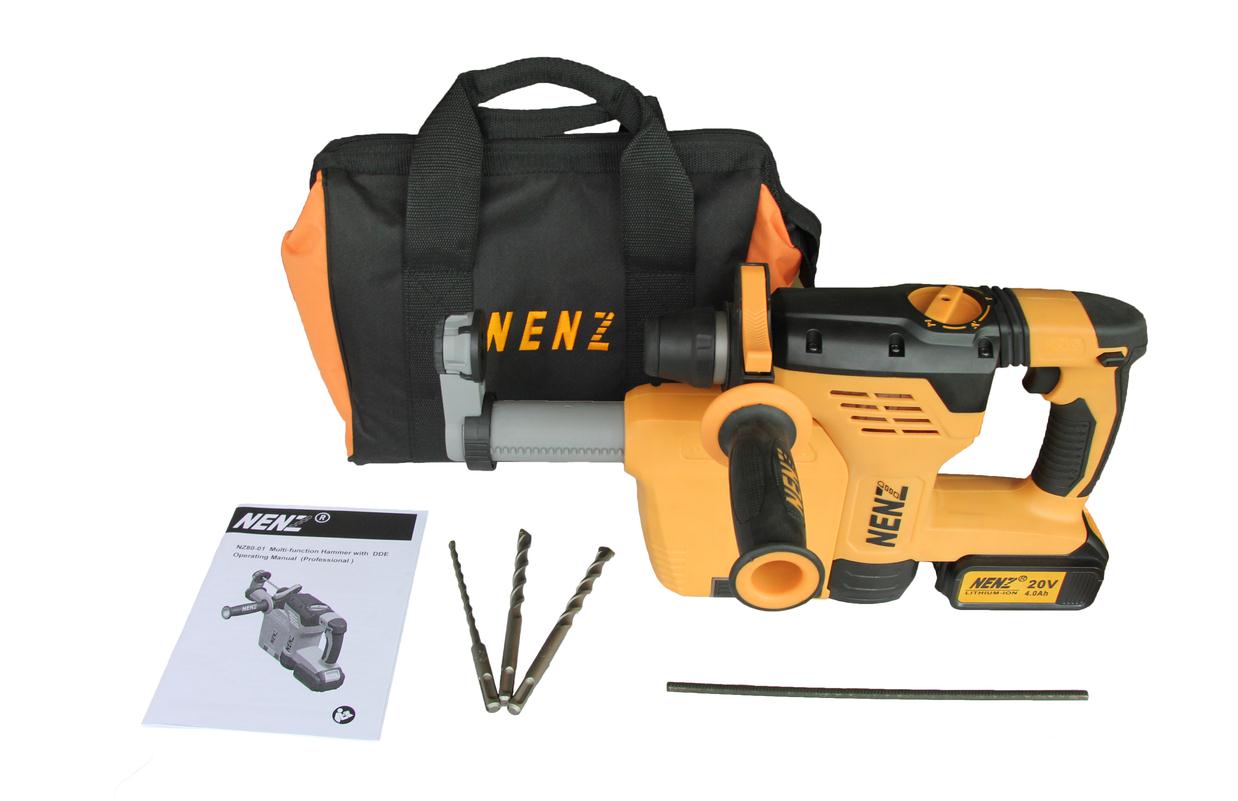Mechanism and Impact
Both a hammer drill and rotary hammer pound its bit while spinning and pulverizing concrete, but the pounding mechanism works differently in the two tools.
A hammer drill is quite similar to a drill a typical non–professional or DIY homeowner might own, and features mechanisms that drive drill bits forward as it rotates, resulting in a high-speed pulsing hammer-like action. The power of a hammer drill is generated by rotating ribbed clutch plates, and impact happens as the two ribbed metal discs click in and out against each other. The hammer added to the drill takes the same straight-shank bits as a regular drill. The generated torque from drilling concrete may cause bits to slip in the chuck. This type of hammering is useful for projects that have use for drilling into brick, block, concrete or other masonry surfaces. The harness speeds of a hammer drill are much higher compared to that of an ordinary corded drill, making it useful for non-ordinary applications.

 +86-769-23192489
+86-769-23192489







 Our Amazon Shop
Our Amazon Shop  Tel: +86-769-23192489-617
Tel: +86-769-23192489-617